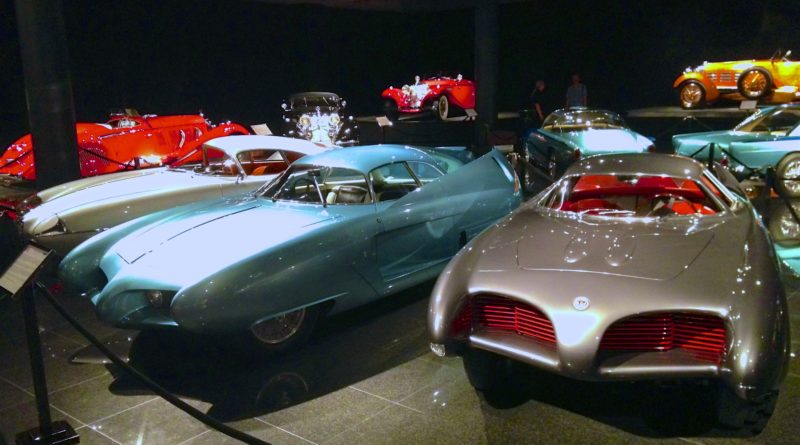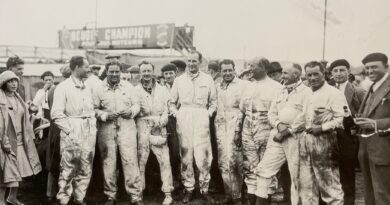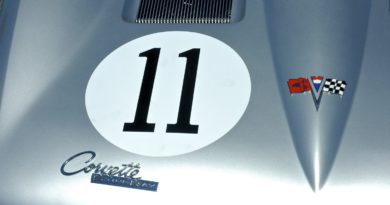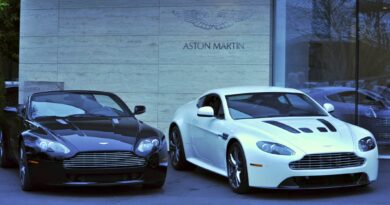A Trio of BATs
As wild as these concept cars appear to be, they actually were serious, road-going aerodynamic design studies commissioned of Carrozzeria Bertone by Alfa Romeo. Each car was presented at the Turin Auto Show, and surprisingly, each was well received despite their radical styling departure. BAT was an acronym for Berlinetta Aerodynamica Technica. Designed by Franco Scaglione and Nuccio Bertone, the cars were based upon the Alfa 1900 Sprint chassis and were intended to study changes in speed and stability through aerodynamic effects.
Being Italian companies, both Alfa Romeo and Bertone have long and colorful histories. Alfa Romeo began life in 1906 as an importer of French-made Darracq taxis. It was absorbed in 1909 by Alfa, which was itself bought out in 1911 by Nicola Romeo and reorganized in 1918 as Alfa Romeo. Enzo Ferrari joined Alfa Romeo in 1920 as a test driver, riding the great racing successes of the Alfa’s throughout the ’20s and 30s. As for Bertone, Nuccio took over the company after WW II from his father, Giovanni, who founded Carrozzeria Bertone in 1912. While the original company met bankruptcy in 2014, it was reformed as industrial design house Groupo Bertone by former employees. Francisco Scaglione, who became an internationally recognized designer, came to Bertone only when Pininfarina refused to hire him after his military aeronautical engineering career ended as a WW II POW. The aerodynamic characteristics of these cars were all done without computers and wind tunnels. Scaglione accomplished it all by eyeballing it with only the help of wool string and movies!
The BAT numbers of the cars actually do reflect their place in the number of design exercises that were executed. The front ends were designed to minimize high speed airflow disruption, and the wheel skirts to minimize air resistance of turning wheels and air vortices; the side windows were canted at 45 degrees and the windshield blended to match the curve of the roof. Aeronautical studies of fin shapes and angles were actually used to design the amazing tail fins. While first glance may lead one to believe the slots cut in the fins were for driver visibility, they were actually cut to relieve air pressure! These cars also delivered on their intended purpose as the BAT 5 achieved a super low drag coefficient (Cd) of 0.23.
The BAT 7 of 1954 was the most radical of the three, with wilder wings, hidden headlights and more extreme shapes. It was even slipperier, achieving an unbelievably low Cd of 0.19! I know of no production car ever reaching that mark. Bertone had worked on wing profiles while in the aircraft industry, and he applied that experience to the wings of BAT 7. With only a 115 HP and weighing 2,200 lb., the BAT 7 could hit 124 MPH.
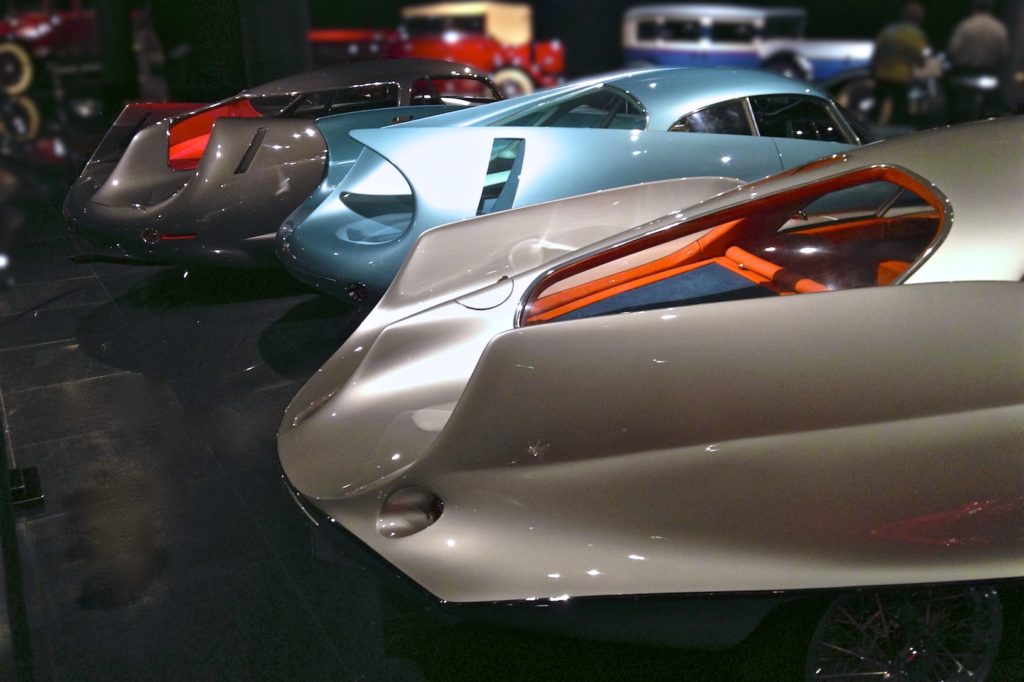
The BAT 9 of 1955 was a bit of a combination of the first two, and visually less extreme. It attempted to be more production realistic while still maximizing aerodynamics. Its fins were smaller and the front end sported a traditional Alfa grill shield. Wide air intakes were on either side of the shield and the headlights received streamlined glass covers blended into the fender’s leading edge.
It’s no secret these cars didn’t make production, but the lessons learned were used on the Alfa Romeo Giulietta Sprint Speciale that was designed by Scaglione. Upon observing the Giulietta, it’s easy to see the BAT car influences that ruled Alfa Romeo for decades. American ’50s and ’60s cars designed by legends Virgil Exner of Chrysler and GM’s Harley Earl stole design cues from the BAT cars, as obviously did Peter Brock & Bill Mitchell’s ’63 split-window Corvette. The BAT cars, shown twice at Pebble Beach, are united here at the wonderful Blackhawk Museum built by former Seattle Seahawks owner Ken Behring. They sold as a set last October 28th at a RM Sotheby’s art (not car) auction for $14.8 million.

I wish I had been able to take more pictures to show off the wonderful shapes and profiles of these cars, but museum space and lighting wouldn’t allow it. Truly astounding cars to see in person. Top Gear has a little Jeremy Clark piece on the cars along with more photos at http://www.95customs.com/the-1953-55-alfa-romeo-bat-concepts/2015/3/2.

